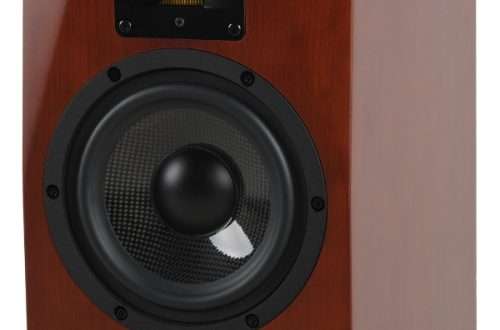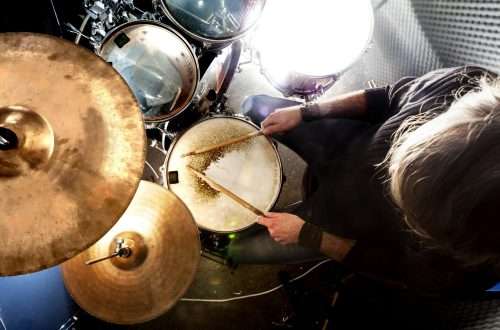
How to choose a piano or a grand piano?
Experienced pianists usually have preferences regarding grand pianos and upright pianos, both for brands and specific models. It even happens that a pianist so much prefers a particular model that he absolutely wants to use a particular piano during a concert. Krystian Zimmerman is particularly picky in this respect, who brings a Steinway piano with his own modifications (which, however, is quite an unusual practice).
But what is a person who wants to start learning or is able to play a bit, but does not know the piano, to do? How to choose from the maze of brands, models and prices, and is there any alternative to the expensive and a bit too loud acoustic instruments for block conditions?
Acoustic or digital?
A graduate of the music academy, he will have no doubts whether he prefers to play an acoustic or a digital instrument. However, since we do not live in a perfect world, even this world can often find itself in a situation where an acoustic instrument will be quite a disastrous solution, not necessarily because of the price (although basic digital models are radically cheaper than acoustic ones), but also because of varied, quality of acoustic instruments and housing conditions.
Although the possibilities of acoustic instruments are greater (although top digital pianos can do a lot already!), A digital instrument can sometimes sound nicer, and what’s more, using an acoustic piano in a block may not be understood by your neighbors due to the large volume. And if such an instrument was placed in a cramped room, which was worse acoustically unprepared, the effect would be unpleasant even for the player … or maybe especially!
A digital piano or grand piano, thanks to its volume control, is good for tight spaces, and saves you money on tuning and often buying, and a graded-hammer keyboard should faithfully reproduce the feel of a traditional keyboard. It may also happen that the sound of a digital instrument will be even deeper than that of an acoustic instrument … When buying an electronic instrument, however, you need to pay close attention to the keyboard. There are instruments on the market that are sold as digital pianos, but they do not have a hammer keyboard, but only a semi-weighted or a hammer keyboard without progression. If the piano is to develop the right habits that will not cause problems when switching to an acoustic instrument, and especially when it is to educate a future virtuoso, then you should bet on a piano with a heavy, hammer-tuned keyboard (graded hammer action).
Acoustic doesn’t mean perfect
If the price and housing conditions did not matter, in principle, you could choose any top acoustic model from any of the leading companies and enjoy having an excellent instrument. After years of learning and playing various instruments at most, one could come to the conclusion that there is a slightly better model, or a piano that better suits our taste. However, if the buyer’s financial resources are limited, then a cut can be made. Buying any acoustic instrument does not guarantee good sound quality, especially nowadays, when many manufacturers, wanting to provide the most affordable instruments, save on materials in various ways. Admittedly, the use of e.g. plastic does not cancel the instrument out yet. There are, for example, many models from Japanese companies which, despite the use of plastics, sound quite good. However, when buying any acoustic piano, you have to be somewhat suspicious of the sound.
What should a good instrument sound like? Well, the sound should be deep and in no way should it bring to mind any sharp object. Many cheap modern pianos have a problem with this: the sound is shallow, dry, and when playing, especially in the upper registers, it resembles the sound of a pin breaking. Some people maliciously call such a sounding instrument “hammering the nails” because the sound is sharp and unpleasant.
Some instruments also have a serious problem with bass. Each tone is made up of a series of overtones – harmonics. The frequency of the treble is so high that we cannot catch the individual components. However, in bass, these “parts” of the tone should be clearly heard in the form of overlapping vibrations, or in other words, a pleasing “purr” (of course, this purring is only pleasant for a single note or a complex major key played. in the case of other compounds, especially the tritone, the sound is naturally, and even should be, unpleasant).
The low tones in a good instrument have an easy to catch, pleasant and interesting, multi-layered, purring structure. In fact, finding the wrong instrument and playing the lowest tones is enough to immediately understand what’s going on – everyone has heard the right sound before and notices that something is wrong with the instrument. If even the lowest tones are homogeneous, smooth, in some way; boring, it means that the manufacturer has saved too much. If, despite painstaking searches, it is impossible to find a good-sounding acoustic instrument in the assumed budget, it is worth taking a look at the offer of digital instruments. For a dozen or so thousand. PLN, you can now buy a good quality digital piano with a pleasant sound.
I prefer the acoustic ones, but I like playing at night
The court composer of King George I of England, Georg Hendel, disturbed his family’s sleep as a child by playing the spinette (the ancestor of the piano) at night. Many young pianists create such “problems”, and in the event of sleeplessness, playing the piano is perhaps the most obvious activity for every pianist.
In addition to the obvious solutions to this problem, more recently, the so-called “Silent Piano”. Unfortunately, it is not a quietly playing acoustic piano, which could be placed in a post-communist block with cardboard-thin walls, but a kind of hybrid of an acoustic piano with a digital one. This instrument has two modes of operation. In normal mode, you play a regular piano, while in silent mode, the hammers stop hitting the strings and start controlling electromagnetic sensors. As night falls, you can put on your headphones and switch to digital piano mode and choose from a variety of acoustic, electric and multi-instrument pianos, just like you would on regular digital pianos.
Final advice and summary
Although there is no ideal instrument, and it is especially difficult to find such an instrument with a limited budget, the market offer is so wide that everyone will find something for themselves, provided that they pay attention to a few basic aspects:
1. The size of the acoustic instrument should be matched to the size of the room. The instrument should not only fit in the room, but also in terms of sound. There must be room for the sound to diverge.
2. When you live in a block of flats, remember about your neighbors. The acoustic instrument can be heard clearly through walls and disturb other residents.
3.When deciding on a digital instrument, pay attention to the keyboard. If only one fits your budget, it’s best to choose a fully weighted hammer action keyboard.
4. Pay attention to the sound quality, also in acoustic instruments. The sound should not be dry or prickly, but pleasant and full.
5.It is best to test the instrument personally. From the video on the Internet, you can only get a rough idea of the sound an instrument makes. However, films cannot be used as a comparison, because the way they are produced distorts the real sound in various ways.
Comments
Interesting article, written without excessive fanaticism, primarily taking into account the practical aspects when choosing an instrument.
greetings, Marek
nine





